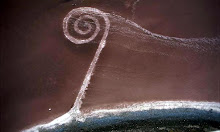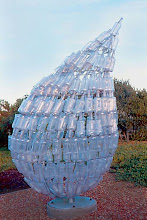Wednesday, March 31, 2010
Question from Discussion
The examples of the Statue of Liberty, the triangles outside the Louvre, and the Eiffel Tower were given as pieces that, through history, have become so grounded in their sites that it's difficult to imagine the place without them. Can sites such as these truly be considered site-specific? If not, how do we categorize them?
Tuesday, March 30, 2010
Vanishing Point (2008): Award-winning site-specific choreography

Monday, March 29, 2010
Jochen Gerz & Esther Shalev-Gerz's "Monument Against Fascism"
The original monument:

What can be seen today of the monument:

Questions to consider:
-Can all monuments be considered site-specific?
-If the artist intends for the piece to eventually disappear, is that considered "destroying the work"? (Remember Richard Serra's quote: "To move the work is to destroy the work".)
Wednesday, March 24, 2010
Grace and Composure
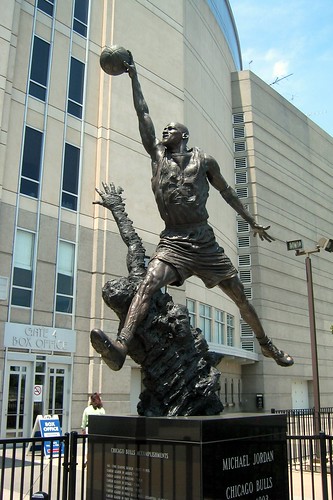
Studium, Punctum, & Roland Barthes

Roland Barthes retains a sense of profundity in his work. His ideas of transforming everyday things into true science, the punctum & the studium, and his criticism in general have had great impact on the world of modern art and criticism. Focusing on the punctum and studium, today I will look at its relation to the situation.
As noted, images will outlast their producers. That being known, it is interesting to see that situation, something that is so dynamic, can be captured in film. We can look at any given photo and without hesitation point out that there is a situation, whether manufactured or natural; that is, the difference between theatricality and absorption. Going back to my own photos, there is a distinct punctum that is quite irritating in almost every picture. The absorption that is associated with candidness is something I firmly believe comprises any punctum. Looking at Nicaragua, I see that the punctum is a product of the situation itself. If the nuns were not walking one way, the soldiers another, there would be no situation (of course depending on your standards for a situation), hence no punctum. It is, as I see it very difficult to have art devoid of a punctum, for almost everything creates some sort of tension, even if it’s the aesthetics of the thing that please you in the first place.
This is not to say the punctum is limited to the realms of photography, for its applications extend far beyond. Let us look at Chris Burden’s performance art. The crux of performance art, especially Burden’s, lies at the situation; Burden puts himself in a situation in which he leaves the outcome to the external stimuli that are involved (whether or not they want to be).
Every situation carries with it a “punctum,” a sense of tension, of “pricks.” The sensation is familiar, mostly because from situation to situation we feel this. We are pelted with punctums thus desensitizing us, making it easier to find in works of art.
Thursday, March 18, 2010
Christo and Jeanne-Claude: "Surrounded Islands"
original sketch
completed work
Francois Davin: Site-specific Art for the General Public
"Le blues de l'escalier"

Tuesday, March 16, 2010
Absurdist Art, Silliman, & Situation



Ron Silliman, as discussed in class is very into the idea of streaming data and the human interaction. We, as humans, often avoid the idea of intangible streams of data and try to freeze things, like pictures do, in order to deal with it, this incomprehension of what real life is. Society, to this day, is irrational, and we can look at some of the absurdist art movement work (from the 50's) in order to see how they dealt with it. Specifically the theatre of the absurd played a huge part in the reflection of modern life during that time- for an example through Samuel Beckett's "Waiting for Godot" click here. Essentially it was a way to deal with the absurdity of real life.
Monday, March 15, 2010
The Asheville Flatiron
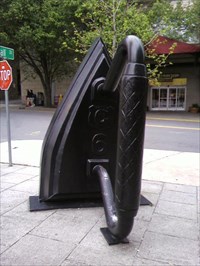
A local piece of site-specific art you may have seen is the large black flatiron found in Asheville, NC. This iron structure was fashioned by artist Reed Todd in the shape of a laundry iron used in the early 1900s and placed in downtown Asheville across from the historic Flatiron Building. (Flatiron buildings earn their name from their formation, usually taking on the shape of an isosceles triangle.) The flatiron structure mimics not only the name and shape of the building, but also the time period in which the Flatiron Building was created.
Friday, March 12, 2010
Gas Works Hill Sundial

Located off of Lake Union in Seattle is Gas Works Park. One of the park's more well-known features is what is known to the locals as "Kite Hill", a man-made hill placed specifically where the wind has been known to pick up. Though it might be a bit of a stretch to call the hill a piece of art, it is site-specific, as are its features. The pathways leading to the top are placed strategically so that, when climbing up the hill, the walkers can avoid being overtaken by the wind. One of its most interesting features, however, is a sundial/calendar positioned on the top of the hill. Artists Chuck Greening and Kim Lazare fashioned and positioned this sundial so that when the sun shines upon it, a person can read both the time of day and the season based on where their shadow falls. The sundial serves both an aesthetic and a functional role due to its specific placement.
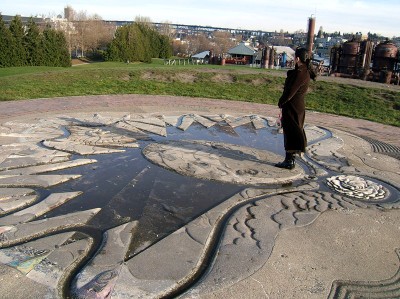
Thursday, March 11, 2010
Karaoke Korner
Wednesday, March 10, 2010
Oppenheim's One Hour Run
One of Oppenheim's most famous performance pieces was 1968's One Hour Run, in which he created a six-mile, continuous path of snowmobile tracks in St. Francis, Maine. While this is an example of the ephemeral nature of site-specific art, it is also a perfect example of an artist completely embodying his site.
Oppenheim's One Hour Run

For more information on Dennis Oppenheim, click here.
References: Site-Specific Art: Performance, Place and Documentation by Nick Kaye. Pages 151-152.
Sunday, March 7, 2010
Tyga, Rap, & Sartre

I was thinking about situation & music today, specifically I was listening to Tyga's song "Cali Love" off his album "Outraged and Underaged." The song just kinda reminded me of a modern version of Sartre's preface in his "Situations." Of course, it's a completely different time period and we seldom keep lookout for the communist overthrow in our daily lives (of course it may be different in China and North Korea), but someone like Tyga expresses so much "situation" in his music. Tyga, a Compton native, knows more than most do about the American condition (let us use that as a variable for situation); the poor, crime-infested, violence-ridden, and "high culture" devoid lives of the Americans in places like Compton, Detroit, (parts of) Harlem, and whatnot. In his music you'll find not much else than the likes of his specific situation, at least in terms of content. Similarly, we can recall that Sartre so obviously pointed out that censored work is incomplete (duh), but it is truly unbelievable that a disparity in culture can have such vast differences in art; a California slum, opposed to a communist run group is unable to access so many amenities to even create art, yet somehow produces soulful art, whereas a communist culture that Sartre speaks of will never reach that level.
Monday, March 1, 2010
El Greco's "The Burial of Count Orgaz" (1586)

Although site-specific paintings are not as common in today's society, history has shown us many examples of paintings designed to fill a certain space. Most of these paintings were portraits commissioned by royals and other aristocrats who desired to fill a space in their homes. Though most of these paintings found a place in a member of the upperclass's personal collection, certain pieces were designed to fit into other (more public) spaces.
A prime example of the latter type of site-specific painting is "El entierro del Conde Orgaz" ("The Burial of Count Orgaz") by El Greco. This painting was commissioned in 1586 by the church of Santo Tome in Toledo after the death of Count Orgaz, a pious man who had dedicated much of his time, money, and effort to charitable deeds. The painting was designed to fit into the space above Count Orgaz's tomb inside the church of Santo Tome. For this reason, the painting has a uniquely rounded top so that the edges can fit in the space provided (as shown below).




